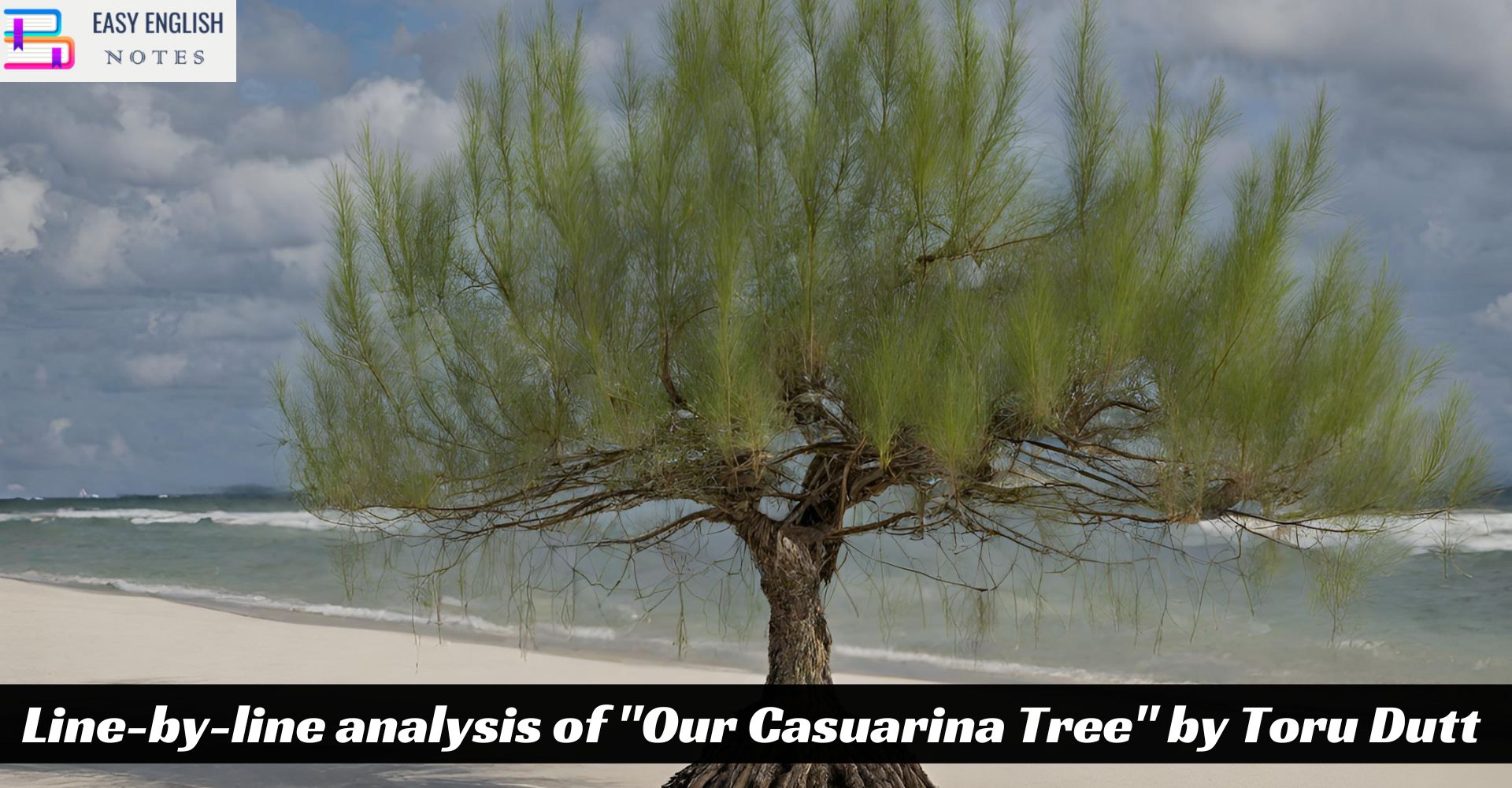Introduction
Toru Dutt’s “Our Casuarina Tree” stands as a beacon of the symbiotic relationship between nature and human emotion, encapsulating the poet’s memories, cultural heritage, and the universal themes of love, loss, and connection. This analysis embarks on a journey through Dutt’s masterpiece, unraveling the intricate tapestry of symbolism, imagery, and personal sentiment woven into each line.
Line-by-Line Analysis
Stanza One: The Tree’s Grandeur
The poem opens with a vivid portrayal of the Casuarina tree, towering and majestic. Dutt’s description is not merely of its physical presence but also its symbolic stature in her life and memories. The tree is a living entity, enveloping the sky with its “giant wreaths of snow,” a metaphor for the blossoms that adorn its branches. This imagery not only captures the tree’s beauty but also its role as a protective figure and a witness to the passage of time.
Google Ads PPC Training Digital – membership area
An Exclusive Blood Sugar Balancing And Weight Loss
Stanza Two: A Sanctuary for Life
Dutt delves deeper into the ecosystem surrounding the tree, illustrating its role as a sanctuary for various forms of life. The “creeper” clinging to it symbolizes enduring connections, while the mention of birds and creatures around it highlights the tree’s role in nurturing life. This stanza serves as a microcosm of the world, with the tree at its center, fostering life and relationships.
Stanza Three: The Personal Connection
The poet personalizes her relationship with the tree, recounting memories of joy and companionship beneath its boughs. It’s here that Dutt intertwines her personal narrative with the tree’s life, marking it as a silent observer of moments both joyous and sorrowful. The tree is a constant, a marker of time and memory, standing resilient through the seasons of life.
Stanza Four: Transcending Time and Space
Dutt’s reflections transcend the immediate, moving towards the spiritual and the eternal. The mention of the “Koels” and the “water-lily” brings forth elements of Indian flora and fauna, embedding the poem within its cultural context. The tree becomes a bridge between the earthly and the divine, a symbol of enduring strength and continuity amidst the transient nature of human existence.
Stanza Five: A Tribute and a Plea
In the concluding stanza, Dutt’s tone shifts from contemplation to a poignant tribute. The tree is immortalized through her words, a lasting monument to the bonds of love and memory. Yet, there’s a plea for remembrance, a fear that these memories might fade into obscurity. Dutt calls upon the tree itself to be the guardian of these tales, ensuring that the bonds of love, so intricately connected with its existence, endure beyond the confines of time and space.
Also Read :
- Compare Hamlet with Macbeth, Othello and other Tragedies
- “The Pardoner’s Tale” is the finest tale of Chaucer
- Prologue to Canterbury Tales – (Short Ques & Ans)
- Confessional Poetry – Definition & meaning
- Line By Line Explanation Of The Poem The Eve of St. Agnes
Thematic Exploration
Dutt’s “Our Casuarina Tree” is rich in themes of memory, the interconnection of life, and the search for immortality through nature and poetry. The tree serves as an emblem of the unbreakable bonds of love, transcending the physical realm into the spiritual. It is a testament to the poet’s deep-seated cultural roots and her contemplation on the universal experiences of loss, remembrance, and the eternal quest for continuity.
Conclusion
“Our Casuarina Tree” is not just a poem about a tree; it is a deeply personal narrative, a cultural homage, and a philosophical reflection on life’s impermanence and the nature of memory. Toru Dutt, in her brief life, crafted a piece that resonates with the universal human experience, capturing the essence of love and loss, memory and hope, in the immutable presence of nature. This analysis, while concise, aims to illuminate the layers of meaning and emotion that Dutt has interwoven within each line, offering a glimpse into the soul of a poet who found in a casuarina tree, not just a subject for her verse, but a companion, a muse, and a bridge to eternity.
This summary aims to encapsulate the essence of “Our Casuarina Tree,” highlighting its literary, cultural, and emotional depth. Toru Dutt’s work is a rich field for exploration, offering insights into not only her personal world but also the broader human condition through the lens of nature and memory.











